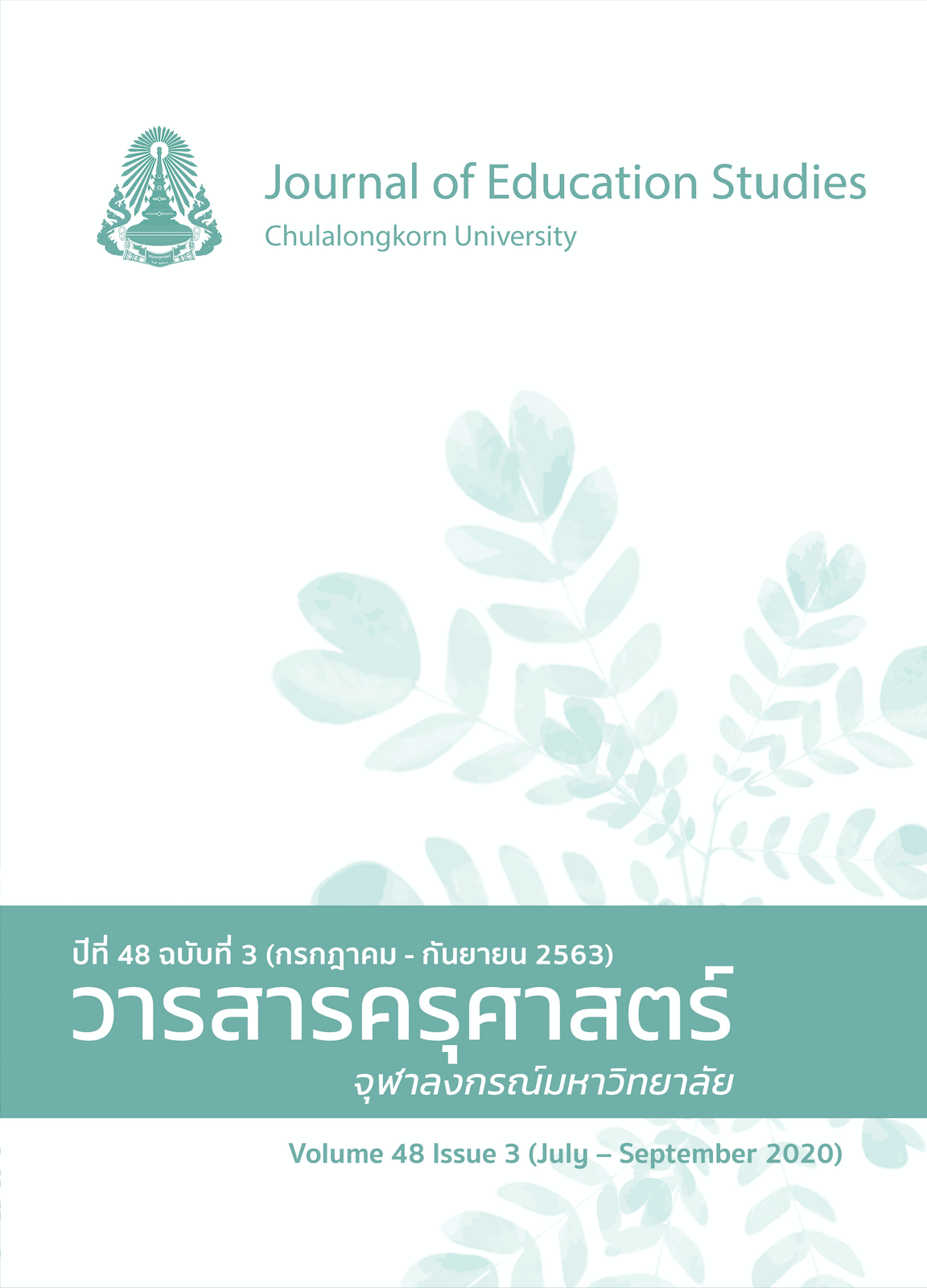Public Consciousness Development of Student Teachers at Chiang Rai Rajabhat University under the Public Consciousness Training Program
Keywords:
public consciousness, training program, student teacherAbstract
This research aimed to 1) study the level of public consciousness of student teachers at Chiang Rai Rajabhat University, 2) develop the public consciousness training program for student teachers at Chiang Rai Rajabhat University, and 3) study the effects of the public consciousness training program on student teachers at Chiang Rai Rajabhat University. The sample group included 30 students from the Faculty of Education, who were selected using the purposive sampling method. The research tools included a public
consciousness questionnaire and the public consciousness training program for student teachers at Chiang Rai Rajabhat University. The data were analyzed using mean scores, standard deviations, and t-tests.
The results were as followes:
1. Overall mean scores of the student teachers' public consciousness were at high level (M = 3.51, SD = 1.26). However, their scores on the “Regarded as one’s responsibility” topic were at a moderate level (M = 3.23, SD = 1.36).
2. The public consciousness training program for student teachers at Chiang Rai Rajabhat University consisted of four learning units, which were 1) teachers with public consciousness, 2) teachers’ duty, 3) public consciousness for building relationships, and 4) public consciousness projects for better society. The duration of the training program lasted 12 hours in total and was evaluated with high level scores (M = 4.07, SD =1.9).
3. The results from the training program showed that the student teachers’ public consciousness scores, as a result of completing the training program (M = 4.60, SD = 0.51), were significantly higher than those before participating in training program (M = 4.04, SD = 0.31) at .05 level of significance.
References
ภาษาไทย
กาญจนา ไชยพันธุ์. (2549). กระบวนการกลุ่ม. โอเดียนสโตร์.
เชี่ยวชาญ ภาระวงค์. (2556). ภาวะผู้นําการ เปลี่ยนแปลงกบประสิทธิผลการบริหารงานักวิชาการของโรงเรียนมัธยมศึกษา สังกัดสํานักงานเขตพื้นที่การศึกษาจังหวัด นครพนม เขต 1. วารสารมหาวิทยาลัยราชภัฏสกลนคร, 4(7), 104-116.
จันทิรา ธนสงวนวงศ์. (2555). จิตสาธารณะ. สืบค้นจาก http://mos.etech.ac.th/mdec/learning/s1301/unit08.htm
ทิศนา แขมณี. (2545). ศาสตร์การสอน. กรุงเทพมหานคร: จุฬาลงกรณ์มหาวิทยาลัย.
ธนิดา ทองมีเหลือง และคณะ. (2550). ปัจจัยทางสังคมที่ส่งผลต่อจิตสาธารณะของนิสิตมหาวิทยาลัยศรีนครินทรวิโรฒ. วารสารพฤติกรรมศาสตร์, 13(1), 91-102.
นิคม คาวีรัตน์. (2553). การพัฒนารูปแบบการจัดการเรียนรู้เชิงประสบการณ์เพื่อสร้างเสริมสุขภาวะสำหรับนักศึกษา มหาวิทยาลัยราชภัฏ.( วิทยานิพนธ์ปรัชญาดุษฎีบัณฑิต ไม่ได้ตีพิมพ์). นครปฐม: มหาวิทยาลัยศิลปากร.
นิรมล ศตวุฒิ. (2543). การพัฒนาหลักสูตร. กรุงเทพมหานคร: ภาควิชาหลักสูตรและการสอน คณะศึกษาศาสตร์ มหาวิทยาลัยรามคำแหง.
นงนภัส พันธ์พลกฤต. (2556). รูปแบบการพัฒนาจิตสาธารณะของนักเรียนชั้นประถมศึกษาปีที่ 6 โรงเรียนประถมศึกษาในเขตอำเภอเมือง จังหวัดเชียงใหม่. วารสารจิตพฤติกรรมศาสตร์: ระบบพฤติกรรมไทย, 10(1-2), 57-59.
ดาว์พงษ์ รัตนสุวรรณ. (2561). การผลิตครูเพื่อปฏิรูปการเรียนรู้สู่อนาคตการศึกษาไทย. สืบค้นจาก https://www.moe.go.th/moe/upload/news20/FileUpload/46009-8402.pdf
บุญล้อม ด้วงวิเศษ และ มนสิช สิทธิสมบูรณ์. (2560). การพัฒนารูปแบบการสอนแบบเน้นประสบการณ์เพื่อส่งเสริมทักษะชีวิตสำหรับนักศึกษาครู มหาวิทยาลัยราชภัฏ. วารสารมนุษยศาสตร์และสังคมศาสตร์ (สทมส.), 23(1), 67-83.
ไพบูลย์ วัฒนศิริธรรม และ สังคม สัญจร. (2543). สังคมไทยที่พึงปรารถนา. กรุงเทพมหานคร: มูลนิธิบูรณะชนบทแห่งประเทศไทยฯ.
มหาวิทยาลัยราชภัฏเชียงราย. (2561). รายชื่อนักศึกษา. สืบค้นจาก http://orasis.crru.ac.th/orasis_crru/mis_public/student
เรียม นมรักษ์. (2552). การวิเคราะห์องค์ประกอบของจิตสาธารณะของนักศึกษาในองค์กรนักศึกษา มหาวิทยาลัยรามคำแหง. (วิทยานิพนธ์ปรัชญาดุษฏีบัณฑิต ไม่ได้ตีพิมพ์).กรุงเทพมหานคร. มหาวิทยาลัยรามคำแหง.
วิทยพัฒนท สีหา. (2551). ปัจจัยที่สัมพันธ์กับจิตสาธารณะของนิสิตระดับปริญญาตรี มหาวิทยาลัย มหาสารคาม. (วิทยานิพนธ์การศึกษามหาบัณฑิต ไม่ได้ตีพิมพ์). มหาสารคาม. มหาวิทยาลัย มหาสารคาม.
สุภัทรา ภูษิตรัตนาวลี. (2547). ปัจจัยที่เอื้อต่อการพัฒนาจิตสำนึกต่อสังคมของนิสิต จุฬาลงกรณ์ มหาวิทยาลัย. (วิทยานิพนธ์ปริญญามหาบัณฑิต ไม่ได้ตีพิมพ์). จุฬาลงกรณ์มหาวิทยาลัย.
สุทธิรัตน์ โมราราย และ บัณฑิตา อินสมบัติ. (2555). การวิเคราะห์องค์ประกอบจริยธรรมทางวิชาชีพของนักเรียนระดับประกาศนียบัตรวิชาชีพ (ปวช.) สังกัดอาชีวศึกษา จังหวัดนครสวรรค์ วารสารวิชาการเครือข่ายบัณฑิตศึกษา มหาวิทยาลัยราชภัฏภาคเหนือ, 2(3), 59-72.
สำนักวิชาการและมาตรฐานการศึกษา. (2547). เรียนรู้บูรณาการ. กรุงเทพมหานคร. โรงพิมพ์คุรุสภา ลาดพร้าว.
อภิเชษฐ จันทนา และ กาญจนา ไชยพันธุ์. (2553). ผลการใช้กระบวนการกลุ่มเพื่อพัฒนาจิตสาธารณะของนักเรียนชั้นมัธยมศึกษาตอนต้น โรงเรียนบ้านโป่งขุตเพชรพัฒนา สำนักงานเขตพื้นที่การศึกษาชัยภูมิเขต 3. Journal of Education Khon Kean University (Graduate Studies Research), 4(3), 130-138.
อ้อมใจ วงษ์มณฑา. (2554). รายงานการวิจัยปัจจัยที่สงผลต่อจิตสาธารณะของนักศึกษามหาวิทยาลัยสงขลานครินทร์. มหาวิทยาลัยสงขลานครินทร์.
ภาษาอังกฤษ
Bandura, A. (1977). Social learning theory. Prentice–Hall.
Berman, S. (1999). Service learning for the multiple intelligence classroom. Illinois: Skylight Training and Publishing.
House, J. S. (1985). The nature of social support. Addison Wesley.
Kolb, D. A. (1984). Experiential learning: experience as the source of learning and development. Prentice-Hill Inc,
Taba, H. (1962). Curriculum development: Theory and practice. New York: Harcourt Brance & World.




